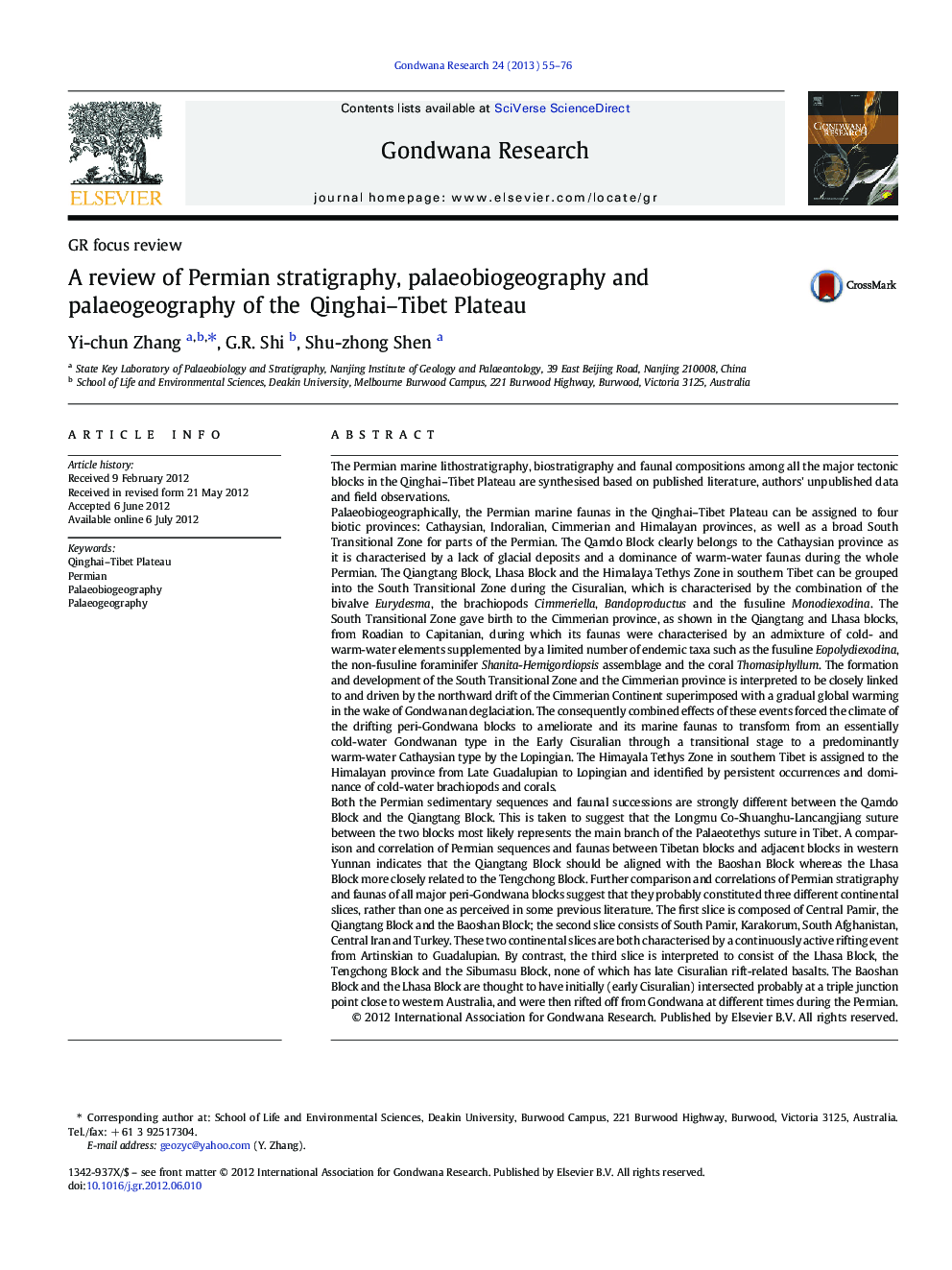| کد مقاله | کد نشریه | سال انتشار | مقاله انگلیسی | نسخه تمام متن |
|---|---|---|---|---|
| 4727028 | 1356358 | 2013 | 22 صفحه PDF | دانلود رایگان |
The Permian marine lithostratigraphy, biostratigraphy and faunal compositions among all the major tectonic blocks in the Qinghai–Tibet Plateau are synthesised based on published literature, authors' unpublished data and field observations.Palaeobiogeographically, the Permian marine faunas in the Qinghai–Tibet Plateau can be assigned to four biotic provinces: Cathaysian, Indoralian, Cimmerian and Himalayan provinces, as well as a broad South Transitional Zone for parts of the Permian. The Qamdo Block clearly belongs to the Cathaysian province as it is characterised by a lack of glacial deposits and a dominance of warm-water faunas during the whole Permian. The Qiangtang Block, Lhasa Block and the Himalaya Tethys Zone in southern Tibet can be grouped into the South Transitional Zone during the Cisuralian, which is characterised by the combination of the bivalve Eurydesma, the brachiopods Cimmeriella, Bandoproductus and the fusuline Monodiexodina. The South Transitional Zone gave birth to the Cimmerian province, as shown in the Qiangtang and Lhasa blocks, from Roadian to Capitanian, during which its faunas were characterised by an admixture of cold- and warm-water elements supplemented by a limited number of endemic taxa such as the fusuline Eopolydiexodina, the non-fusuline foraminifer Shanita-Hemigordiopsis assemblage and the coral Thomasiphyllum. The formation and development of the South Transitional Zone and the Cimmerian province is interpreted to be closely linked to and driven by the northward drift of the Cimmerian Continent superimposed with a gradual global warming in the wake of Gondwanan deglaciation. The consequently combined effects of these events forced the climate of the drifting peri-Gondwana blocks to ameliorate and its marine faunas to transform from an essentially cold-water Gondwanan type in the Early Cisuralian through a transitional stage to a predominantly warm-water Cathaysian type by the Lopingian. The Himayala Tethys Zone in southern Tibet is assigned to the Himalayan province from Late Guadalupian to Lopingian and identified by persistent occurrences and dominance of cold-water brachiopods and corals.Both the Permian sedimentary sequences and faunal successions are strongly different between the Qamdo Block and the Qiangtang Block. This is taken to suggest that the Longmu Co-Shuanghu-Lancangjiang suture between the two blocks most likely represents the main branch of the Palaeotethys suture in Tibet. A comparison and correlation of Permian sequences and faunas between Tibetan blocks and adjacent blocks in western Yunnan indicates that the Qiangtang Block should be aligned with the Baoshan Block whereas the Lhasa Block more closely related to the Tengchong Block. Further comparison and correlations of Permian stratigraphy and faunas of all major peri-Gondwana blocks suggest that they probably constituted three different continental slices, rather than one as perceived in some previous literature. The first slice is composed of Central Pamir, the Qiangtang Block and the Baoshan Block; the second slice consists of South Pamir, Karakorum, South Afghanistan, Central Iran and Turkey. These two continental slices are both characterised by a continuously active rifting event from Artinskian to Guadalupian. By contrast, the third slice is interpreted to consist of the Lhasa Block, the Tengchong Block and the Sibumasu Block, none of which has late Cisuralian rift-related basalts. The Baoshan Block and the Lhasa Block are thought to have initially (early Cisuralian) intersected probably at a triple junction point close to western Australia, and were then rifted off from Gondwana at different times during the Permian.
Figure optionsDownload as PowerPoint slideHighlights
► The Cimmerian Continent is composed of three different continental slices.
► The Qiangtang Block linked up with the Baoshan Block during the Permian, both originated from the Indian Plate.
► The Lhasa Block linked up with the Tengchong Block during the Permian, both originated from Australia.
Journal: Gondwana Research - Volume 24, Issue 1, July 2013, Pages 55–76
